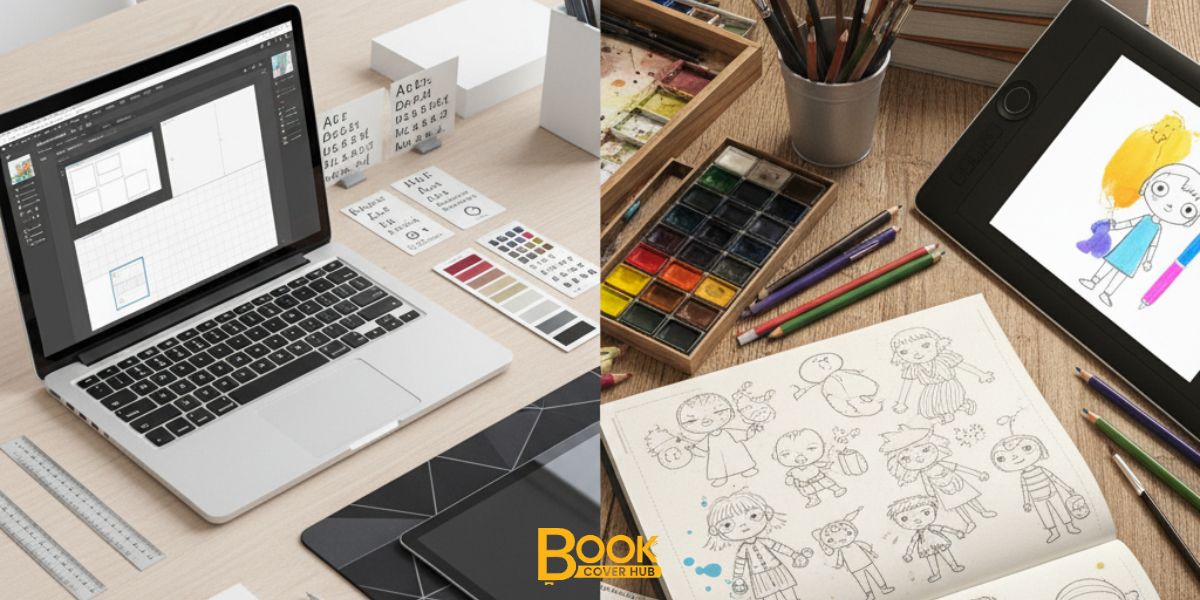When embarking on a children’s book publishing journey, authors often find themselves confused about the distinct roles of various creative professionals. Understanding the difference between a children book designer and an illustrator is crucial for making informed decisions that can significantly impact your book’s success. While these roles may seem similar at first glance, they serve unique purposes in the book creation process.
Understanding the Children Book Designer Role
A children book designer focuses on the overall visual structure and layout of the entire book. Their expertise extends far beyond individual artwork, encompassing the comprehensive visual experience that readers encounter from cover to cover. These professionals consider typography, page layout, color schemes, and how text integrates with visual elements throughout the publication.
Book designers work with various elements including font selection, spacing, margin considerations, and the strategic placement of both text and images. They ensure that the book maintains visual consistency while creating an engaging reading experience that supports the story’s flow and enhances comprehension for young readers.
The designer’s role also includes making crucial decisions about paper quality, binding options, and print specifications that affect the book’s durability and appeal to children. They understand how different materials and finishes impact the tactile experience, which is particularly important for younger audiences who often explore books through touch.
The Illustrator’s Creative Domain
Illustrators, on the other hand, specialize in creating the artwork that brings stories to life visually. Their primary focus is developing characters, scenes, and visual narratives that complement and enhance the written text. These artists possess specialized skills in drawing, painting, or digital art creation, depending on their chosen medium and style.
Professional illustrators understand child psychology and development, creating age-appropriate imagery that resonates with specific target audiences. They develop consistent character designs, establish visual storytelling techniques, and create artwork that maintains continuity throughout the entire book.
The illustration process involves extensive collaboration with authors and publishers to ensure that the visual elements accurately represent the story’s tone, characters, and setting. Illustrators must balance artistic creativity with practical considerations such as printing limitations and budget constraints.
Key Differences in Responsibilities
The fundamental distinction between these roles lies in their scope of responsibility. While illustrators create individual pieces of artwork, designers orchestrate how all visual elements work together to create a cohesive publication. Designers consider the book as a complete product, while illustrators focus on the artistic components within that framework.
Designers handle technical aspects such as file preparation for printing, color management, and ensuring that all elements meet publishing industry standards. They work closely with printers and publishers to resolve technical issues and maintain quality control throughout the production process.
Illustrators concentrate on storytelling through visual means, developing artistic styles that align with the book’s target audience and genre. They may create preliminary sketches, character development sheets, and final artwork while maintaining consistency in style and quality across all illustrations.
Collaboration and Workflow
In most professional publishing environments, designers and illustrators work collaboratively rather than independently. The designer typically receives completed illustrations and integrates them into the overall book layout, making adjustments to ensure optimal placement and flow.
This collaborative process often involves multiple revision rounds where designers and illustrators work together to refine the visual presentation. Designers might request modifications to illustrations based on layout requirements, while illustrators might suggest design changes to better showcase their artwork.
Communication between these professionals is essential for creating successful children’s books that engage young readers effectively. Both must understand the target audience, story requirements, and publishing constraints to deliver exceptional results.
Educational and Skill Requirements
Children book designers typically possess backgrounds in graphic design, with specialized knowledge in typography, layout design, and print production. Many hold degrees in graphic design, visual communication, or related fields, supplemented by experience in book publishing or children’s media.
Illustrators usually have formal training in fine arts, illustration, or similar creative disciplines. Their skill sets include proficiency in various artistic mediums, understanding of color theory, and ability to create compelling visual narratives that appeal to children.
Both professions require ongoing education to stay current with industry trends, new technologies, and changing preferences in children’s literature. Professional development often includes workshops, conferences, and continuous portfolio development.
Making the Right Choice for Your Project
When determining whether you need a designer or illustrator for your children’s book project, consider your specific requirements and existing resources. If you already have completed illustrations but need professional layout and design services, a children book designer would be the appropriate choice.
Conversely, if you have a completed manuscript but need original artwork to accompany your text, hiring a professional illustrator should be your priority. Many successful children’s books benefit from both specialized professionals working in tandem.
Some experienced professionals offer combined services, providing both illustration and design capabilities. However, it’s important to evaluate their expertise in both areas to ensure quality results across all aspects of your project.
Book Cover Hub understands these distinctions and can help connect authors with the right creative professionals for their specific needs. Whether you require specialized design services, custom illustrations, or comprehensive creative support, choosing the right professional partnership is essential for your book’s success in the competitive children’s literature market.

